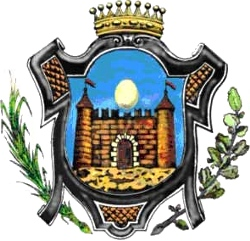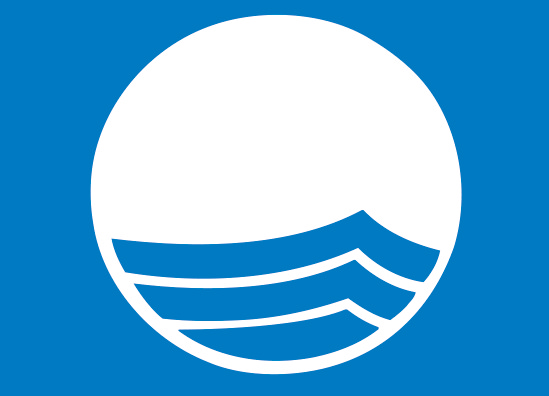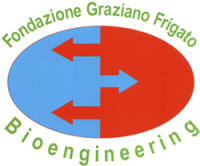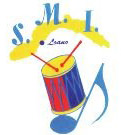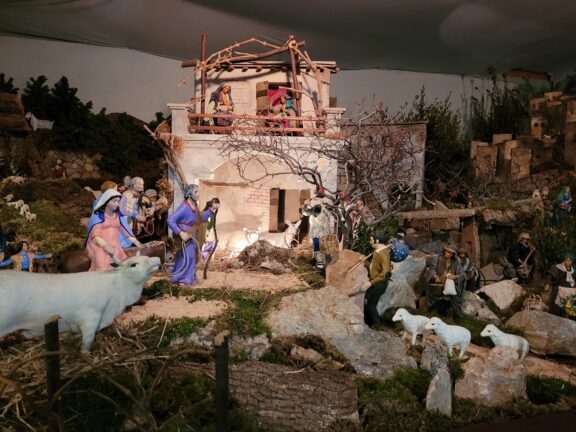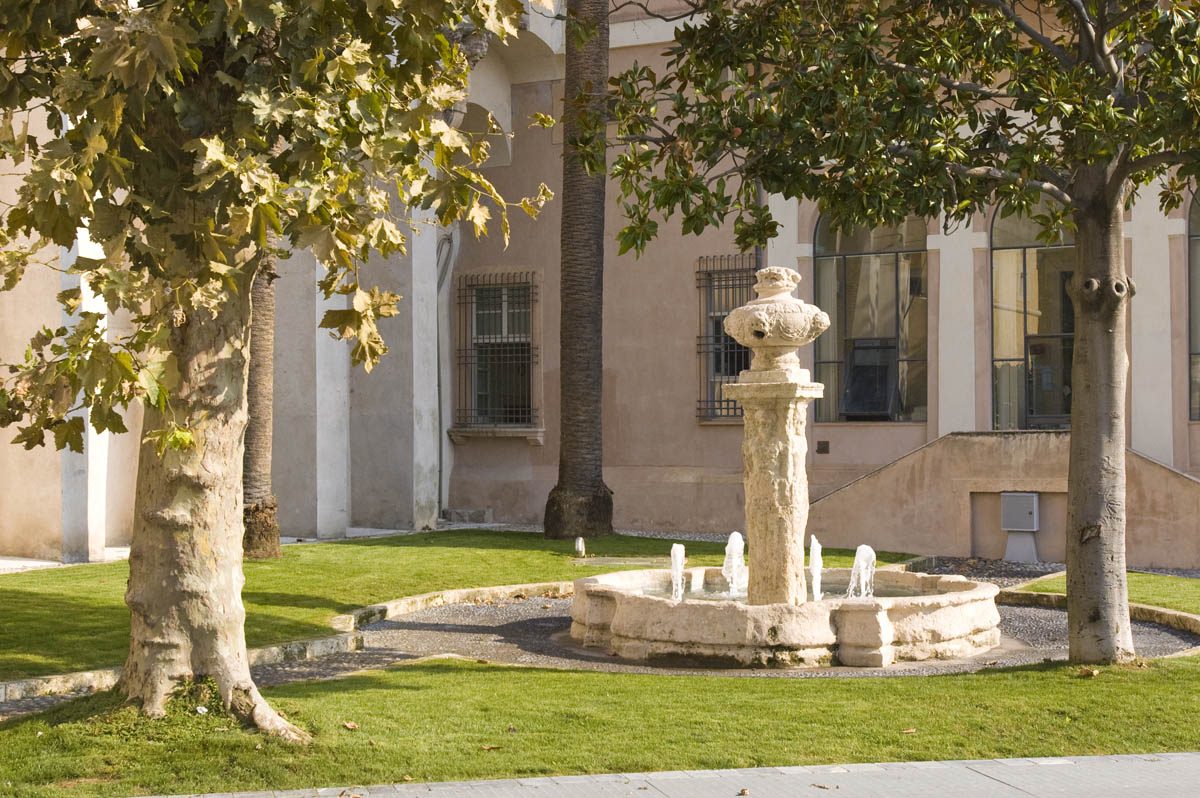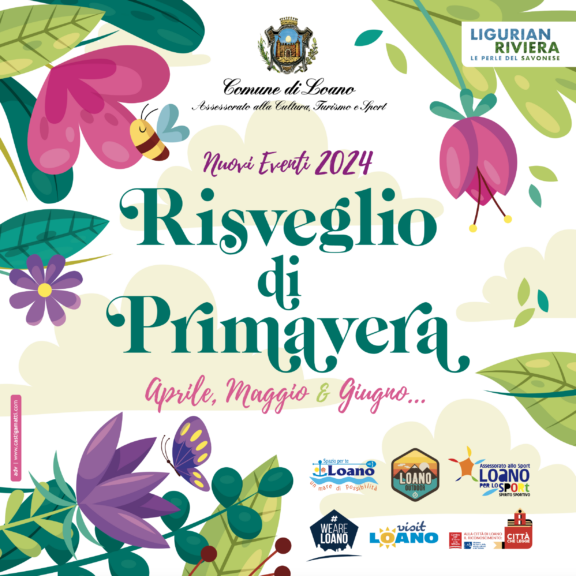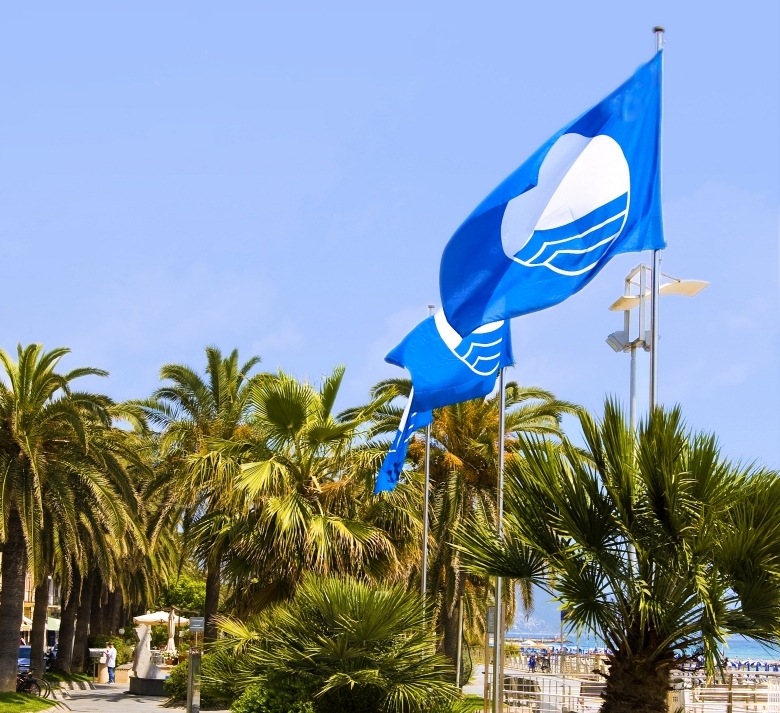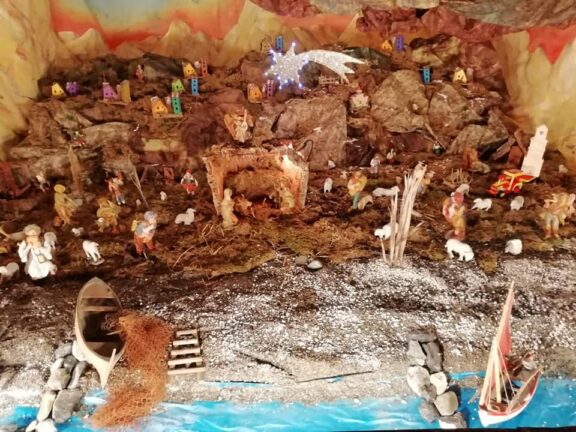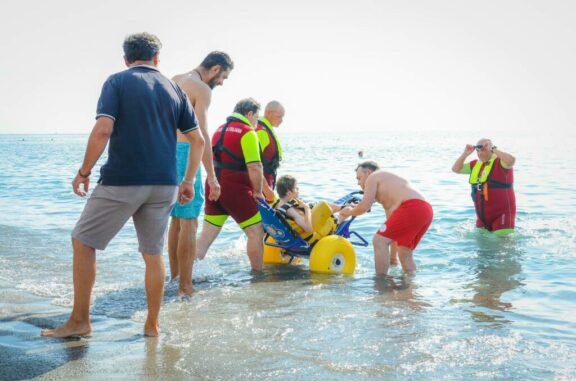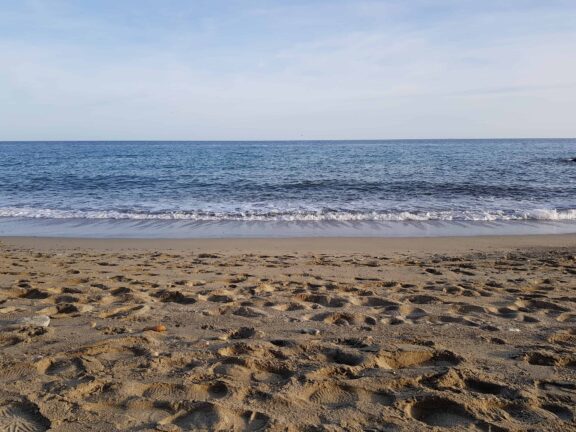Convento Monte Carmelo
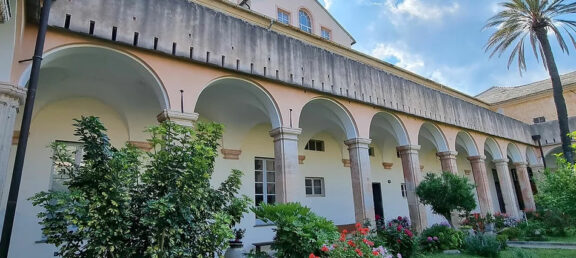
Here we are welcomed by Father Lorenzo, of the Discalced Carmelite order, a young man with a great desire to tell us about his daily life inside the imposing walls of the convent. Our visit begins at the entrance to the right of the main door, where the “intercom” is still an old tie-rod operating a brass bell.
A plaque highlights the fact that the complex is a National Monument, dating back to 1609. The convent is part of a legacy from the Doria family, Princes of Loano, who owned it for several centuries. Between the 19th and 20th centuries, it was a novitiate house, while today it is used mainly as a place of prayer. It boasts a vegetable garden, various terraces, a vineyard and a small olive grove, and the farm of the same name is the main source of income for the community of friars who live there, five to be exact.
Father Lorenzo urges us to enter to enjoy the coolness under the porticoes that enclose the magnificent cloister. A garden full of flowers, aromatic herbs, trees and succulents invites the guest to find peace. Father Lorenzo has a calm voice and a good smile, the scent of lemonade and the view of the lush garden make us forget that we are in a tourist resort during the busiest period. The ground floor, with its horseshoe-shaped layout, is the meeting place and the cloister is the central part where monastic life unfolds.
We are surrounded by columns of Verezzi stone whose arches support an internal walkway leading to the monks’ cells. Looking up towards the dome, we can see three beautiful sundials on three sides of the monastery – north, west and east – which indicate the time according to where the sun is going. (Morning, afternoon and evening). In the centre of the garden, to complete the perfect geometry of the place, we find an octagonal fountain. Typical of the Romanesque era of which it is a part, it is filled with water and white water lilies in bloom, and in the centre stands a limestone stone, probably a pedestal for votive images.
We now head south, past the fountain, along the lane surrounded by different varieties of flowers, and after passing through a second door, we come to the vegetable garden. The fruit of the dedication of two eighty-year-old monks, we are amazed by the variety of crops grown in four quadrants, divided two by two according to the tasks and preferences of the monks themselves. Some prefer pumpkins, artichokes and fruit trees, while others are dedicated to citrus fruits, vegetables and aromatic herbs.
The fruits of their precious labour are then processed into jams, soaps, essential oils and creams. Entering the garden, we follow the walkway under the magnificent topiaries laden with countless bunches of different varieties of grapes, for which Father Lorenzo tells us the main uses.
We continue our visit by crossing another piece of land belonging to the monastery, which in all boasts plots covering almost 3500 square metres. Here we can admire the centuries-old dedication to the cultivation of olive trees and vines, from which an excellent Ligurian vermentino is produced, a fantastic accompaniment to our traditional dishes. A few hens scratch around in the paddock while the cock crows our presence.
From this angle we have a view of the west aisle of the church on one side and the imposing peak of Monte Carmo on the other. Father Lorenzo accompanies us again among some huts dedicated to the storage of the work equipment used in the countryside by a cooperative that helps them with the most tiring agricultural work, and in the meantime he tells us his story. His vocation, born as a child, when at the tender age of 10, admiring the happiness in the eyes of the parish priest of his neighbourhood, he decided to follow in his footsteps and “live happily as he did”. We are amazed and truly moved, as we rarely meet such clear and pure souls.
He grew up on the outskirts of Milan, spent his adolescence in Arenzano and then, two years ago, came to Loano. His story takes us up to the upper floors of the convent where he shows us a gem linked to the lords of the time. The royals attended mass, he reveals, through an internal window overlooking the altar, a unique and reserved way not to interact with the people and where they could wait for the parish priest to take communion. The staircase continues up one more floor and through a veranda we go out onto a very large terrace that gives us a 360° view of the Ligurian gulf on one side, the Doria castle (which can be visited on FAI days) and the mountains behind. Our visit ends at the shop “Gli Orti del Carmelo” where you can find everything that the monks produce here and in the Arenzano convent.
Some of the items are skilfully packaged and processed by specialist companies in the sector, which bring out all the quality of the raw materials and the passion that the Carmelites transmit.
Fonte: Due zaini e un camallo.






